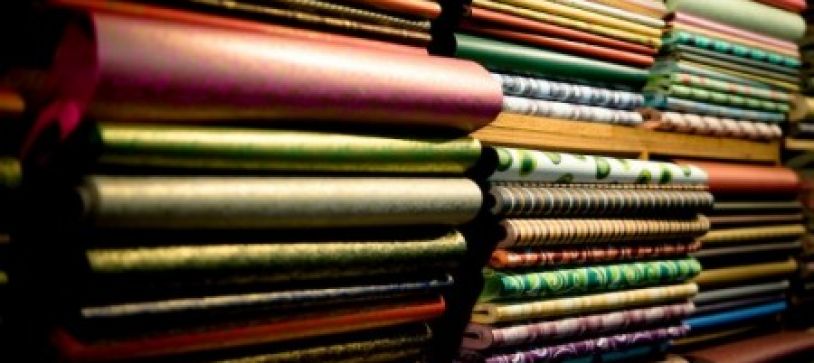Sensory Strategy in the Textile Market in China

Sensory Strategy in the Textile Market in China: The Market Opportunity
With the rising middle-class, as well as the growing international awareness, Chinese consumers have become highly brand conscious, and the possession of luxury products is a status symbol. The fast urbanization and the increasing spending power of the population contributed to the rapid growth of clothing markets. According to statistics from Daxue Consulting, by 2020, total fashion sales in China are expected to triple its current amount. The nation has potential to become the world’s largest consumer market for the fashion industry in the next following years.
The Market Challenge
Tatiana Kuzmina, Daxue’s sensory research project leader, emphasizes the importance of Sensory evaluation: “You need to target your audience through the senses. It is not enough to have the best strategy concerning pricing, distribution channels, promotion, or location, if you do not think about perception, especially in Asia. A lot of firms not considering that fact have already failed in China.”
Thus, it is crucial to match your product’s sensory attributes as well as the sensory surroundings to the consumers’ needs and preferences. For instance, even by comparing fashion magazine posts we can see the difference in color and material. However, the problem does not necessarily need to be the product itself, but may also originate from external things, such as the packaging, or the light and the music in the POS.
Case Study: Textile industry
Our client, a European premium brand in the textile industry, already present in the Chinese market, experienced weak sales last years. The company sought to boost its sales and decided to investigate the perception of Chinese consumers towards color, light, and the general environment better to be able to better target their audience by offering the right product within the right environment. Therefore, the client approached Daxue Consulting, to conduct an extensive sensory analysis including a comprehensive competitor analysis to apply this knowledge and improve the client’s performance.
Daxue Consulting’s Expertise conducting Sensory Research in China
Daxue Consulting prepared individual steps to undertake to help our client better performing and competing within the industry. Our research team, therefore, gathered quantitative primary as well as secondary data and complemented it by qualitative research.
Phase 1: Desk research
The first phase included a desk research to gain a comprehensive overview of the clothing market including an insight of top players in the respective industry and market segment in China. Daxue Consulting’s analysis comprised the general market situation, its trends and risks and additionally, key competitors’ strategies in the premium segment with a focus on pricing and distribution channels.
Phase 2: Competitors’ benchmark
Additionally to the desk research about our client’s key competitors, Daxue Consulting carried out store checks. The team, therefore, used the Store Checker App. Daxue Consulting uniquely designed this app for large-scale store checks and mystery shopping projects. It allows for efficient, affordable and reliable data collection, such as monitoring the distribution or assessing the in-store brand signage, which was part of the second phase.
Phase 3: In-depth Interviews
As a next step, Daxue Consulting recruited experts in the fashion field, as well as sellers in stores, to conduct in-depth interviews. Thus, the team ensured supporting the research with adequate qualitative data. Our team organized and moderated these sessions in three different Chinese cities.
Phase 4: Sensory Research complemented by small focus groups
Sensory research applies the principles of experimental design and statistical analysis to human senses to assess the perception, liking or disliking of products’ and environment’s attributes. The evaluation comprises a broad range of different methodologies. However, Daxue Consulting decided in this case for the affective sensory test, complemented by rapid sensory profiling tests.
Our consultant team used appropriate software to conduct sensory research in the client’s shops. Our team observed the behavior of consumers in the store while testing the influence of the overall environment, playing with different senses, such as different light and sound options. Daxue also conducted hedonic and preference tests complemented by JAR-tests (just-about-right-scales) with the focus on the haptic, optic and acoustic sense after briefing the participants professionally. These methods helped our team to understand how well consumers accept distinctive characteristics, what the ‘drivers of liking,’ the preferred key attributes are, and additionally showed the preferences compared to competitors’ aspects.
Moreover, Daxue organized small focus groups (4×4). Our team recruited suitable participants and structured and moderated the group sessions according to the needs of the client’s project. By complementing the Sensory evaluation with focus groups, Daxue Consulting was able to investigate the reason behind consumers’ preferences and likings.
Phase 5: Quality Check & Analysis
Daxue Consulting checked and analyzed the obtained data with different and complex software as well as scientific formulas to be able to calculate the level of errors and finally receive reliable results. Our team, moreover, used multidimensional statistical techniques to cross-analyze the various data and identify the relative impact of different characteristics as well as to simplify interpretation of findings.
Phase 6: Final Report & Recommendations
After evaluating and cross-analyzing the gathered data throughout the various research processes, our team provided sensory maps for better visualization and communication of the findings. Daxue Consulting also provided recommendations on how to adapt the clients’ products with regards to texture to better perform within the industry by suiting Chinese preferences. Additionally, our research team prepared detailed information about key competitors’ strength and weaknesses and advised the client what changes concerning sensory surroundings (such as light) the Chinese premium clothes consumer prefer.
Daxue Consulting has accomplished various sensory research projects in different industries including F&B, or cosmetics as well as various sensory projects concerning packaging.
Click here to get more information about how Daxue’s team is conducting sensory analysis in China.

